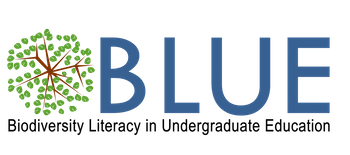Mysterious Occurrences: Representation, Resiliency, and Redundancy in Native Plant Populations
Author(s): Rhea Ewing1, Rachel Hackett2, Anna Monfils3
1. RheaEwing.com 2. Michigan Natural Features Inventory 3. Central Michigan University
311 total view(s), 83 download(s)
Student Copy Mysterious Occurences with Rachel HackettUpdated4-2-24.pdf(PDF | 765 KB)
Teacher Copy Mysterious Occurences with Rachel HackettUpdated4-8-24.pdf (Instructors only)(PDF | 971 KB)
- Arctos Tutorial - BLUE Resource (v1.0)
- GBIF Tutorial - BLUE Resource (v1.0)
- iDigBio Tutorial - BLUE Resource (v1.0)
- License terms
Description
Meet Dr. Rachel Hackett and learn about her job as a botanist and conservation biologist. Rachel introduces the concepts of Representation, Resiliency, and Redundancy in native plant populations.
Students completing this module will be able to:
-
Explain the role of data in conservation of endangered species and their habitat
-
Understand the basics of Redundancy, Resiliency, and Representation in conservation
-
List at least three different sources that can be used to research the history of a plant population
-
Identify 3 ways humans interact with rare plant and animal species and the data we have collected about them
Notes
Updated learning objectives and activities-- learning objectives are now more streamlined and activities more aligned with objectives.
Cite this work
Researchers should cite this work as follows:
- Rhea Ewing, Rachel Hackett, Anna Monfils (2024). Mysterious Occurrences: Representation, Resiliency, and Redundancy in Native Plant Populations. Biodiversity Literacy in Undergraduate Education, (Version 2.0). QUBES Educational Resources. doi:10.25334/HQZK-NC16
